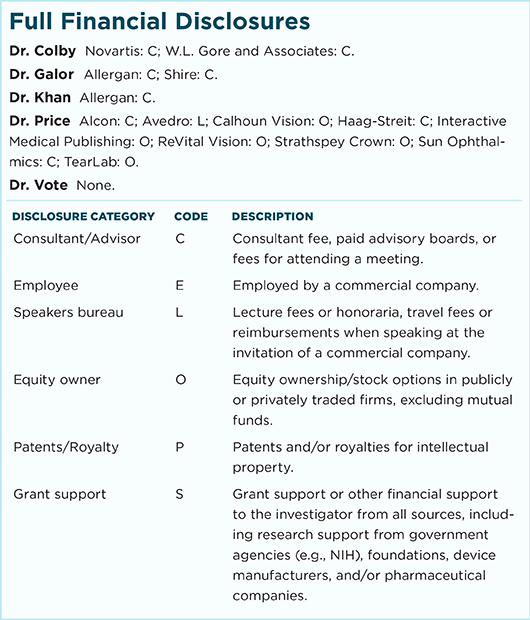Download PDF
The possibility of a lower-cost alternative to the femtosecond laser for cutting precise, reproducible capsulotomies is attractive, but one such automated device has yielded mixed results, Australian researchers have reported.
The thermal capsulotomy device (Zepto, Mynosys) consists of a disposable handpiece with a circular ring at the tip, attached to a power console. The surgeon inserts the handpiece tip into the anterior chamber through a 2.2-mm incision and places the ring onto the anterior capsule, aligned with the visual axis. The power console then incises the capsule with a ring of 4-millisecond energy pulses.
 |
IRREGULARITIES. Scanning electron microscopy showed areas of irregularity, with different degrees of rolling angle and direction (1A, 1B) and frayed collagen fibers at the capsulotomy margins (1C).
|
Study results. In this prospective study, the Zepto successfully created capsulotomies (N = 13) that were central and circular, providing for good intraocular lens position.1 This was similar to earlier reports by others who conducted preclinical studies and 1 small clinical study.2
Irregular margins. However, at the slit lamp, the researchers found that fraying was visible along the thermal capsulotomy margins. Viewed with scanning electron microscopy (SEM), all the capsular buttons had irregularities and frayed collagen fibers along their edges. In contrast, SEM of 2 capsular buttons that were removed after continuous curvilinear capsulorrhexis (CCC) showed they had uniform margins, with no imperfections.
The propensity for irregular margins on thermal capsulotomies is concerning because this might lead to radial capsular tears, said study coauthor Brendan Vote, MBBS, at the University of Tasmania in Launceston, Australia. “There seemed to be an inherent delivery problem in the device, creating a focal ‘hot spot’ and weakened capsule in some cases,” Dr. Vote said.
Clinical problems. In clinical use in about 125 cases, Dr. Vote said, he and other surgeons in Tasmania and Melbourne also have found that incomplete capsulotomy can be a problem. “We have used the device for about 6 months in total, but we have stopped using it as it was not reliable enough in capsulotomy creation.” They also had concerns about potential anterior capsule tears, he said.
Looking ahead. Dr. Vote said he expects the manufacturer to modify the Zepto to address such issues, but an economic roadblock would remain, he said. “Ultimately the biggest barrier to device use, once a satisfactory technical threshold is reached, will be the cost. A per-case cost of $30-$50 would need to be achieved to make incorporating the device into practice cost-effective.”
According to the manufacturer, a thermal capsulotomy system sells for about $12,000 in the United States, compared to approximately $500,000 for a femtosecond laser. But each single-use handpiece costs $130 to $165, depending on facility volume.
—Linda Roach
___________________________
1 Hooshmand J et al. Ophthalmology. Published online Oct. 23, 2017.
2 Waltz K et al. J Cataract Refract Surg. 2017 May;43(5):606-614.
___________________________
Relevant financial disclosures—Dr. Vote: None.
For full disclosures and disclosure key, see below.

More from this month’s News in Review